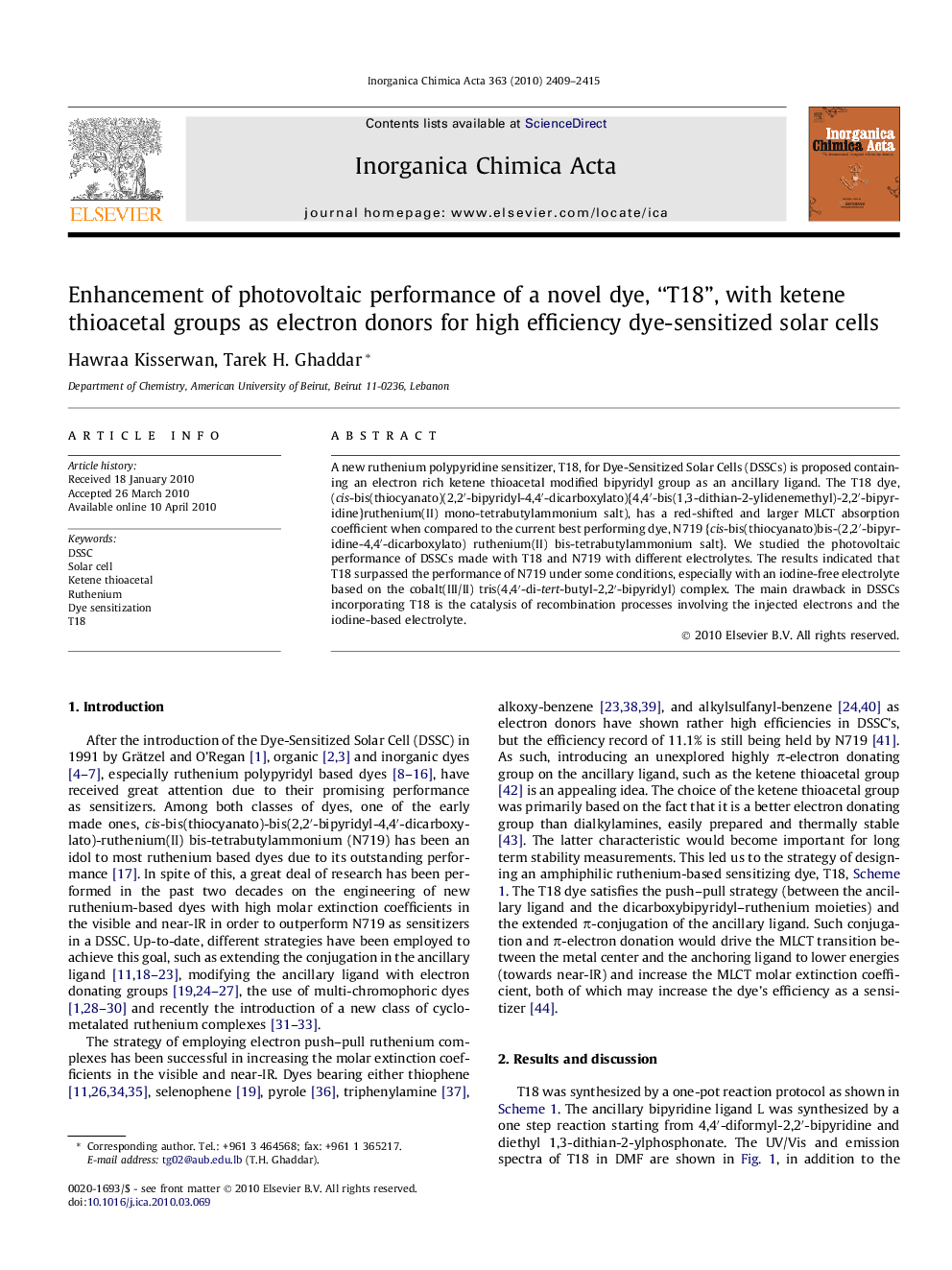| کد مقاله | کد نشریه | سال انتشار | مقاله انگلیسی | نسخه تمام متن |
|---|---|---|---|---|
| 1307996 | 975161 | 2010 | 7 صفحه PDF | دانلود رایگان |

A new ruthenium polypyridine sensitizer, T18, for Dye-Sensitized Solar Cells (DSSCs) is proposed containing an electron rich ketene thioacetal modified bipyridyl group as an ancillary ligand. The T18 dye, (cis-bis(thiocyanato)(2,2′-bipyridyl-4,4′-dicarboxylato){4,4′-bis(1,3-dithian-2-ylidenemethyl)-2,2′-bipyridine}ruthenium(II) mono-tetrabutylammonium salt), has a red-shifted and larger MLCT absorption coefficient when compared to the current best performing dye, N719 {cis-bis(thiocyanato)bis-(2,2′-bipyridine-4,4′-dicarboxylato) ruthenium(II) bis-tetrabutylammonium salt}. We studied the photovoltaic performance of DSSCs made with T18 and N719 with different electrolytes. The results indicated that T18 surpassed the performance of N719 under some conditions, especially with an iodine-free electrolyte based on the cobalt(III/II) tris(4,4′-di-tert-butyl-2,2′-bipyridyl) complex. The main drawback in DSSCs incorporating T18 is the catalysis of recombination processes involving the injected electrons and the iodine-based electrolyte.
A new ruthenium polypyridine sensitizer, T18, for Dye-Sensitized Solar Cells (DSSCs) is proposed containing an electron rich ketene thioacetal modified bipyridyl group as an ancillary ligand. The T18 dye, (cis-bis(thiocyanato)(2,2′-bipyridyl-4,4′-dicarboxylato){4,4′-bis(1,3-dithian-2-ylidenemethyl)-2,2′-bipyridine}ruthenium(II) mono-tetrabutylammonium salt), has a red-shifted and larger MLCT absorption coefficient when compared to the current best performing dye, N719 {cis-bis(thiocyanato)bis-(2,2′-bipyridine-4,4′-dicarboxylato) ruthenium(II) bis-tetrabutylammonium salt}. We studied the photovoltaic performance of DSSCs made with T18 and N719 with different electrolytes. The results indicated that T18 surpassed the performance of N719 under some conditions, especially with an iodine-free electrolyte based on the cobalt(III/II) tris(4,4′-di-tert-butyl-2,2′-bipyridyl) complex. The main drawback in DSSCs incorporating T18 is the catalysis of recombination processes involving the injected electrons and the iodine-based electrolyte.Figure optionsDownload as PowerPoint slide
Journal: Inorganica Chimica Acta - Volume 363, Issue 11, 10 August 2010, Pages 2409–2415